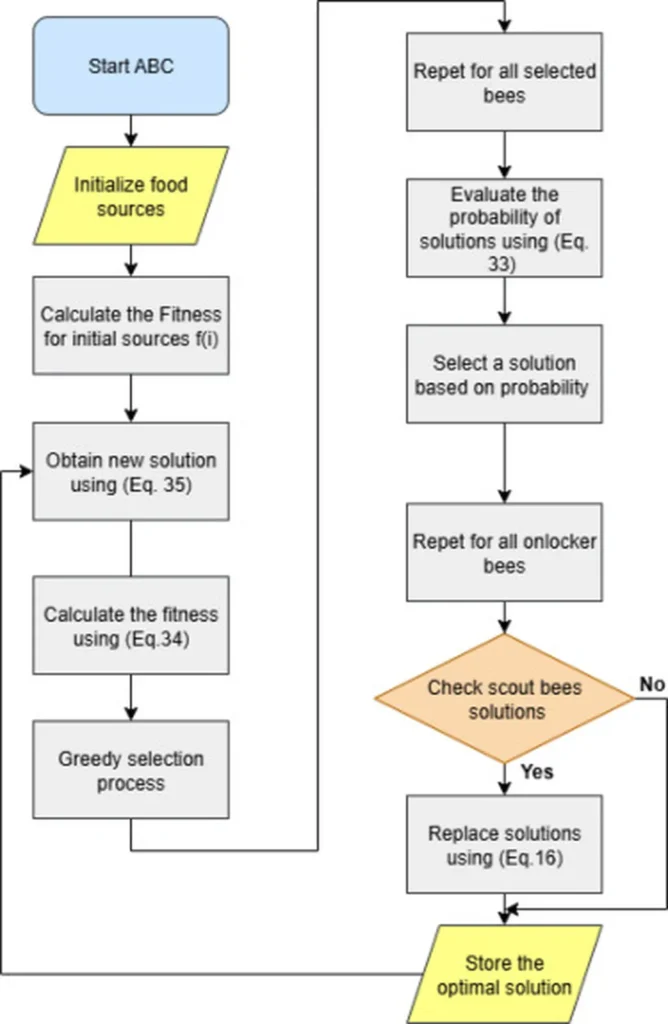In the rapidly evolving energy sector, managing power flow in hybrid microgrids has become a critical challenge. A recent study published in the journal *Franklin Open* (translated as *Open Franklin*) offers a promising solution, demonstrating how advanced algorithms can optimize energy distribution in hybrid AC/DC microgrids. The research, led by Ssadik Charadi of EEIS-Lab at Hassan II University in Casablanca, Morocco, introduces an innovative approach that could reshape the future of energy management.
Charadi and his team developed a power flow management strategy that integrates renewable energy sources like photovoltaic systems and wind turbines, alongside energy storage systems and conventional gas turbines. The microgrid is interconnected with the main grid, allowing for bidirectional energy exchanges to balance supply and demand efficiently. The standout feature of this research is the use of the Artificial Bee Colony (ABC) metaheuristic algorithm to optimize both active and reactive power flows.
The ABC algorithm, inspired by the foraging behavior of honeybees, offers a unique advantage in managing complex energy systems. “The ABC algorithm’s ability to simultaneously optimize multiple parameters makes it particularly suited for hybrid microgrids,” Charadi explained. “It not only minimizes costs but also reduces greenhouse gas emissions, making it a holistic solution for sustainable energy management.”
The study compared the ABC algorithm’s performance with two other methods: the Particle Swarm Optimization (PSO) algorithm and a conventional rule-based approach. The results were impressive. The ABC algorithm achieved a 43.1% reduction in CO2 emissions compared to the conventional approach and a 33.9% reduction compared to PSO. Additionally, it lowered operational costs by 27.54% relative to the conventional method, outperforming PSO, which achieved a 14.83% reduction.
One of the most significant findings was the increased utilization of the Energy Storage System (ESS). The ABC algorithm boosted ESS usage to 463.05 kVA, compared to 284.07 kVA with PSO and 153.85 kVA with the conventional approach. This enhanced utilization of the ESS not only improves the microgrid’s efficiency but also reduces dependency on the main grid by 29.30%, surpassing PSO’s 12.29% reduction.
The research also highlighted the improved integration of renewable energy sources, with a 12.94% increase compared to 5.40% for PSO. These findings underscore the potential of the ABC algorithm to address the challenges of hybrid microgrid management, offering a robust and scalable solution for modern energy systems.
The simulation was conducted using MATLAB® 2024a, leveraging 24-hour ahead meteorological forecasts and load profiles to ensure optimal and adaptive operation under dynamic conditions. This approach ensures that the algorithm can adapt to real-world scenarios, making it a practical solution for commercial applications.
The implications of this research are far-reaching. As the energy sector continues to transition towards renewable sources, the need for efficient and sustainable power flow management becomes increasingly critical. The ABC algorithm’s ability to optimize multiple parameters simultaneously offers a significant advantage over traditional methods, paving the way for more efficient and environmentally friendly energy systems.
Charadi’s work not only advances the field of energy management but also highlights the potential of bio-inspired algorithms in solving complex engineering problems. As the energy sector continues to evolve, the integration of such advanced technologies will be crucial in achieving sustainable and efficient energy solutions.
This research, published in *Open Franklin*, represents a significant step forward in the quest for sustainable energy management. By leveraging the power of advanced algorithms, Charadi and his team have demonstrated a practical and effective solution that could shape the future of the energy sector.

